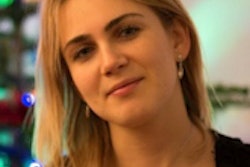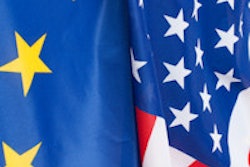
A new French survey to be presented on Saturday at the Journées Françaises de Radiologie (JFR) reveals massive gaps between young radiologists' desire for involvement in teleradiology and their knowledge of the legal and ethical requirements. The survey's lead author, Dr. Nadya Pyatigorskaya, calls for more detailed teleradiology training for residents and a Europe-wide extension of the study to uncover the true extent of the problem.
Involvement in -- and knowledge of -- the technical aspects of teleradiology is high among residents, while ignorance of the stipulations in the guidelines and sometimes of their existence is a common problem, according to Pyatigorskaya, fellow of the neuroradiology department at Pitié Salpêtrière University Hospital in Paris.
She will be presenting the survey as a communication in the JFR session "Teleradiology -- from organization to remuneration," which is being held from 10:30 a.m. to 11:45 a.m. on Saturday, 18 October.
 The next step is to extend the study to the rest of Europe, Dr. Nadya Pyatigorskaya said.
The next step is to extend the study to the rest of Europe, Dr. Nadya Pyatigorskaya said.The survey was undertaken with the collaboration of France's union for residents and young radiologists, Union Nationale d'Internes et de Jeunes Radiologues (UNIR), this year, and 115 trainees and newly qualified radiologists responded.
"In France, residents have the right to participate in private teleradiology practice two and a half years into their residency. We wanted to know if residents and newly qualified fellows were involved in teleradiology and, if so, how they were using it," she told AuntMinnieEurope.com in an interview ahead of JFR. "We also wanted to see how they could be helped."
Pyatigorskaya, the vice chairperson of the Radiology Trainees Forum (RTF) of the European Society of Radiology (ESR), and colleagues sent out an email survey of 25 questions to UNIR's mailing list. The first 13 questions dealt with teleradiology in general, and the other 12 questions were specifically aimed at residents participating in teleradiology practice.
The responses unanimously showed high interest in using teleradiology, mainly due to its added-value aspects for developing medical practice, such as comfort at work, flexible working hours, capacity for a varied caseload, and improvement of patient care. These professional reasons overrode any financial considerations.
 Information presented at the Management in Radiology (MIR) 2014 congress. All charts courtesy of Dr. Nadya Pyatigorskaya.
Information presented at the Management in Radiology (MIR) 2014 congress. All charts courtesy of Dr. Nadya Pyatigorskaya."All agreed that teleradiology had an important role in the practice of tomorrow," she noted. "However, they were less aware of the specific recommendations and legal framework for teleradiology. These legal and ethical aspects need to be included in the initial training of residents in a way that goes beyond any teleradiology training already provided."
The survey, first presented in poster format at this month's Management in Radiology (MIR) congress in Bologna, Italy, showed that the majority of young radiologists were savvy about the more technical issues. For example, most chose to read images on a suitable workstation rather than on their own laptops or smartphones, communicated results using secure channels, and usually provided the protocols for the examinations performed.
However, in answer to a question about whether or not the residents knew if the patient was aware that his or her images would be read via teleradiology, the majority did not know whether the patients were aware or not, or responded that the patients weren't aware.
"Normally, patients should be aware that the exam will be read by teleradiology, so extrapolating from these responses, we can conclude that the respondents don't know about the legal/ethical consideration for patient consent to -- and awareness of -- the use of teleradiology," Pyatigorskaya explained.

Another question focused on whether residents knew the center where the exam was sourced, either by physically visiting the site or through close contact with it.
"Some residents visit the centers and many participate in protocol development. However, many answered that they'd never been to the source center and a few answered that they didn't even know where the images that they were reading were from," she said, adding that the teleradiology working group of the Société Française de Radiologie (SFR) has published recommendations emphasizing the importance of the teleradiologist's role in the local organization and advocating participation in the center's protocol optimization processes through close contact and teamwork.
The responses to the general questions revealed that only 4% of residents had heard of the existence of the European recommendations, and only 26% knew about the French recommendations.
Collège des Enseignants de Radiologie de France (CERF) has recently implemented a theoretical training course in teleradiology for residents, thus providing a part of the solution, according to Pyatigorskaya. UNIR hopes the course will be extended through e-learning for faster dissemination. Furthermore, the survey results and a detailed paper containing links for residents to revise the key points of teleradiological practice will be published early next year in UNIR's journal, RadioActif.
European coverage
"The next step is to extend the study to other European countries with the help of the RTF and the ESR's teleradiology working group. I envisage that results will be very different across Europe as countries are implicated to lesser and greater degrees," Pyatigorskaya noted. "Each country also has its own rules about how teleradiology should work besides some national society recommendations. Most residents are 'lost' in all these considerations."
She believes that like the French survey, the wider results will yield similarities such as overall belief in the validity and usefulness of teleradiology in current and future practice and technical know-how -- but also a lack of knowledge of teleradiology's legal and ethical frameworks.
Pyatigorskaya intends to first undertake a pilot study this year in a few European countries, and depending on how interesting and disparate the results, the plan is then to roll it out through the 42 member countries of the RTF. The pilot and the wider study will be conducted in English and involve thousands of residents. She cites the U.K. as a likely study country as its teleradiology networks are already well established.
"Most delegates at MIR were established radiologists, involved in management, and well informed about the different aspects of teleradiology," she said. "They were interested in the results and in residents' own views of teleradiology, and were somewhat surprised that trainee radiologists weren't aware of the different teleradiological considerations. It will be interesting to gauge the response to this work from both residents and qualified radiologists at the JFR."



















